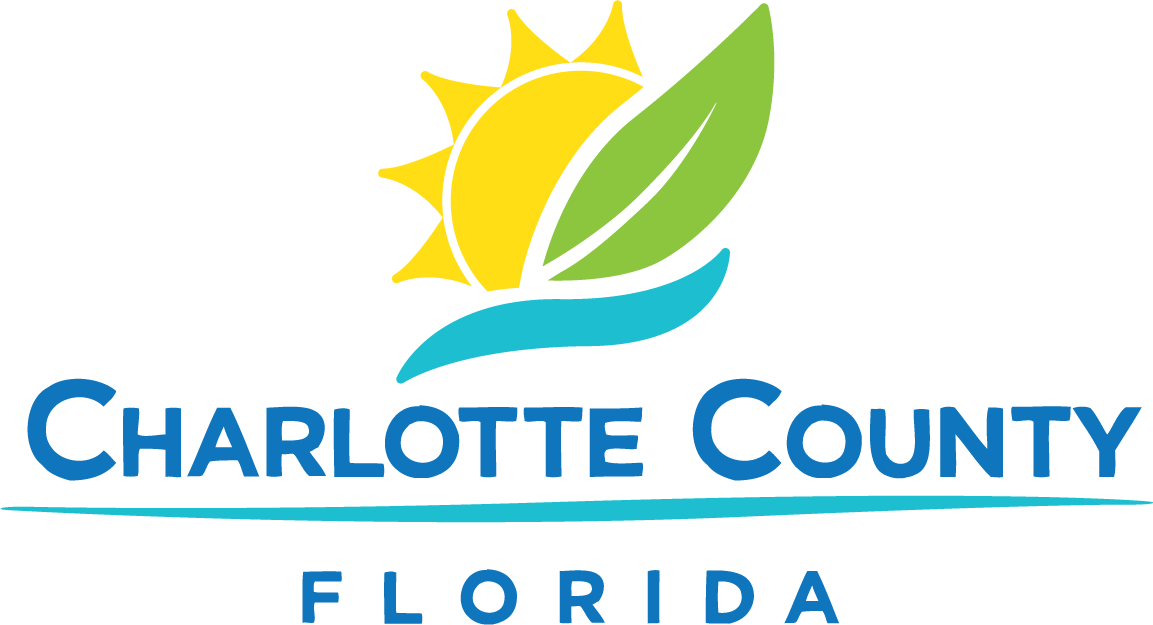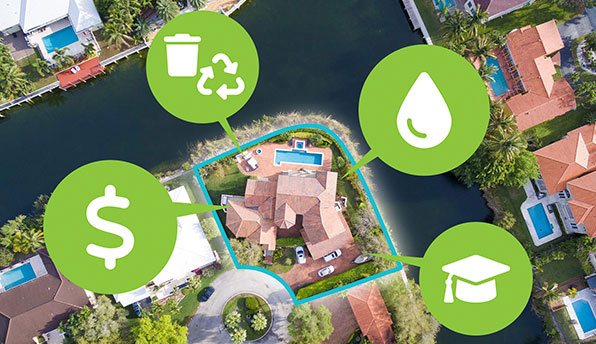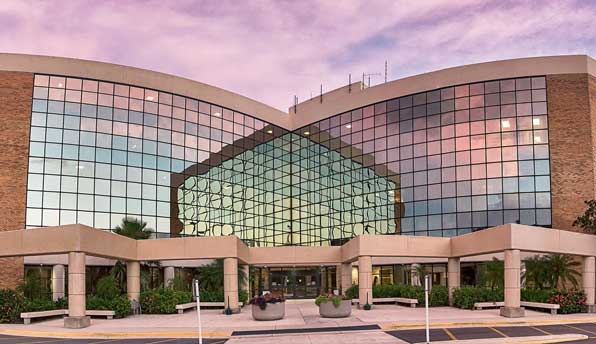Wastewater Treatment Process at East Port
Wastewater (influent) enters the East Port Water Reclamation Facility (WRF) through a 36-inch force main. It passes through a magnetic flow meter, where the rate of wastewater flow is measured and recorded. The WRF is currently rated for 6.0 MGD (million gallons per day). The influent then flows through an automatic bar screen that removes rags and plastics. Grit and sand settle out as the influent flow continues through the vortex grit chambers.
The next stage of the treatment process occurs at the anoxic/aeration basins. This two-stage process removes the biochemical oxygen demand (BOD) and nutrients from the wastewater. In the first stage, the anoxic basin removes the majority of the BOD and part of the nutrients from the influent. In the second stage, the aeration basin removes the remaining BOD and nutrients. These aeration basins are living biological environments and require the same things to live that we do: food, oxygen, and nutrients. Mechanical aerators provide oxygen and the influent provides food and nutrients for the microorganisms. The mechanical aerators have two speeds that allow plant operators to run the aerators at low speed whenever possible, thus reducing operating costs. A stable environment must be maintained by the operators to ensure the health of the microorganisms.
After the biological treatment in the aeration basins is complete, the biosolids (microorganisms) flow to the secondary clarifiers. Here, the biosolids are allowed to settle to the bottom and the clarified water (effluent) flows over the top. Some of the biosolids are returned to the anoxic basins to mix with the influent, and some of the biosolids are removed (wasted) from the clarifiers to the digester.
The clarified effluent is then treated either to a standard for public use as reclaimed water or to a standard for restricted access reuse on the County's spray irrigation fields. For public use reclaimed water, the effluent is sent though gravity sand filters. This effluent is filtered by layers of sand and anthracite to remove the remaining suspended material. The effluent from the gravity sand filters then flows into chlorine contact basin No. 1. The combination of sand filtration and chlorine addition provides high level disinfection, which is required for all reclaimed water distributed to the public. The reclaimed water is used to provide water for irrigating area golf courses and a mobile home community. The reclaimed water system also provides water for the pumps, chlorination points, and general clean-up at the facility.
For restricted access reuse, any excess effluent from the clarifiers bypasses the sand filters and goes directly into chlorine contact basin No. 2. Effluent from the basin is pumped into one of the two effluent storage reservoirs. Effluent from the reservoirs can be distributed as reclaimed, sprayed onto the irrigation fields or pumped down one of the two deep injection wells.
Biosolids (Residuals)
Operators use the term "biosolids" for the solids removed from wastewater during the treatment process. Biosolids from the secondary clarifiers are pumped into rotary drum thickeners and discharged into the aerobic digester. They remain in the digester until they break down and stabilize, thus reducing the volume of the biosolids. This reduction helps to save costs by reducing the size of aerobic digesters needed and by cutting down on the number of trips required to transport residuals to a land application site. Biosolid residuals are transported via county tanker truck to Synagro Technologies Inc. where they are composted and used for beneficial cover at the county's landfill.






